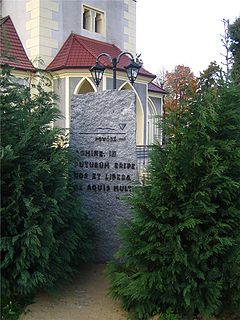1997 Central European flood

|
|
| Date | July 1997 |
|---|---|
| Location | Czech Republic, Poland, Germany |
| Deaths | 105-115 (55 in Poland, 50-60 in the Czech Republic) |
| Property damage | $4.5 billion |
The 1997 Central European flood or the 1997 Oder Flood of the Oder and Morava river basins in July 1997 affected Poland, Germany, and the Czech Republic, taking the lives of about 100 people (in the Czech Republic and Poland) and causing material damages estimated at $4.5 billion (3.8 billion euros in the Czech Republic and Poland and 330 million euros in Germany). The flooding began in the Czech Republic, then spread to Poland and Germany. In Poland, where it was one of the most disastrous floods in the history of that country, it was named the Millennium Flood (Powódź tysiąclecia). The term was also used in Germany (Jahrtausendflut). The flood has also been referred to as the Great Flood of 1997.
Southwestern Poland and the northern Czech Republic experienced two periods of extensive rainfall, the first occurring 3–10 July and the second 17–22 July. The precipitation was caused by a Genoa low pressure system, which moved from northern Italy to Moravia and Poland. The unusual development occurred when the field of higher air pressure between the Azores Islands and Scandinavia was blocked. The center of the low pressure remained over southern Poland for a long period.
The precipitation was very high, measuring 300–600 millimetres (12–24 in), and corresponded to several months' average rainfall over a few days. The waters rose 2–3 m above the previously recorded averages and were so high that they flooded over standing measurement poles. It was one of the heaviest rainfalls in the recorded world's history. It was dubbed the Millennium Flood because the likelihood of such a flood in a particular year was estimated at 0.1%.
Flooding began on July 5 in the Czech Republic and spread to Poland on July 6. Those early floods were very rapid flash floods (water levels rose by up to four meters in half a day). In Poland, the first towns flooded were located around Głuchołazy, and were visited by Polish Prime Minister Włodzimierz Cimoszewicz on July 7. Flooding spread rapidly from Chałupki to Racibórz. In Kłodzko several buildings dating back a few hundred years (kamienica) collapsed; on 8 July the flood reached Krapkowice. In the second stage of the flood, the flood wave flowed down through the Oder river, submerging successive towns in the area. Left-bank Opole was flooded on July 10, Wrocław and Rybnik on July 12, and Głogów soon after. The rising waters slowed by the time they reached the Polish-German border (the Oder-Neisse line), allowing more time for preparations; the damages were thus much lower.
...
Wikipedia
